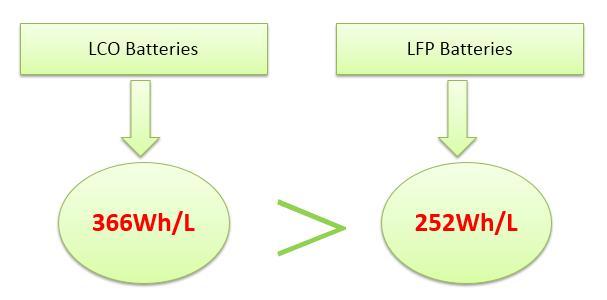
Advantages and Disadvantages of LiCoO2 Batteries and LiFePO4 Batteries
thingiverse
Want to become familiar with the two different types of lithium-ion batteries: Lithium Cobalt Oxide (LiCoO2) and Lithium Iron Phosphate(LiFePO4). Lithium Cobalt Oxide, one of the most common Li-ions, has the chemical symbols LiCoO2 and the abbreviation LCO. And Lithium Iron Phosphate has the chemical symbols LiFePO4 and the abbreviation LFP. Let's take a closer look at their comparison. 1. Comparison of Volume Energy Density Lithium Cobalt Oxide (LiCoO2) packs a lot more energy per unit volume than Lithium Iron Phosphate (LiFePO4). This is evident in the charts, which show that LiCoO2 has a significantly higher volume energy density. 2. Comparison of Quality Energy Density On the other hand, Lithium Iron Phosphate (LiFePO4) has a higher quality energy density than Lithium Cobalt Oxide (LiCoO2). This means that LiFePO4 can store more energy per unit weight than LiCoO2. 3. Comparison of Nominal Voltage Lithium Cobalt Oxide (LiCoO2) typically operates at 3.7 volts, while Lithium Iron Phosphate (LiFePO4) operates at 3.2 volts. 4. Comparison of Normal Temperature Pulse Performance In terms of pulse performance, Lithium Cobalt Oxide (LiCoO2) outperforms Lithium Iron Phosphate (LiFePO4). This is evident in the charts, which show that LiCoO2 can handle more pulses at normal temperature than LiFePO4. 5. Comparison of Normal Temperature Pulse Cycle Performance(Blocking Temperature 55℃) Lithium Cobalt Oxide (LiCoO2) also outperforms Lithium Iron Phosphate (LiFePO4) in terms of pulse cycle performance at normal temperature. This is evident in the charts, which show that LiCoO2 can handle more cycles than LiFePO4. 6. Comparison of Pulse Discharge Performance(Temperature - 20℃) At lower temperatures, Lithium Cobalt Oxide (LiCoO2) performs better than Lithium Iron Phosphate (LiFePO4). This is evident in the charts, which show that LiCoO2 can handle more pulses at -20 degrees Celsius than LiFePO4. 7. Comparison of Cycle Life(Temperature 20℃) In terms of cycle life, Lithium Cobalt Oxide (LiCoO2) and Lithium Iron Phosphate (LiFePO4) are neck and neck. Both batteries can handle a similar number of cycles at 20 degrees Celsius. 8. Comparison of Full Electric High Temperature Storage Performance Lithium Cobalt Oxide (LiCoO2) performs better than Lithium Iron Phosphate (LiFePO4) in terms of high temperature storage performance. This is evident in the charts, which show that LiCoO2 can handle more cycles at 55 degrees Celsius than LiFePO4. 9. Comparison of Safety Performance Lithium Cobalt Oxide (LiCoO2) and Lithium Iron Phosphate (LiFePO4) have similar safety performance profiles. Both batteries are designed to be safe and reliable. In general, both types of lithium-ion batteries have their own advantages and disadvantages: * Lithium Cobalt Oxide (LiCoO2): Higher volume energy density, higher pulse performance, but lower quality energy density. * Lithium Iron Phosphate (LiFePO4): Higher quality energy density, safer, but lower volume energy density. Tattu 12000mah 12v jump starter use LiFePO4 Batteries, and we will release JST2 that use LiCoO2 Batteries. They all have great price and high quality.
With this file you will be able to print Advantages and Disadvantages of LiCoO2 Batteries and LiFePO4 Batteries with your 3D printer. Click on the button and save the file on your computer to work, edit or customize your design. You can also find more 3D designs for printers on Advantages and Disadvantages of LiCoO2 Batteries and LiFePO4 Batteries.
